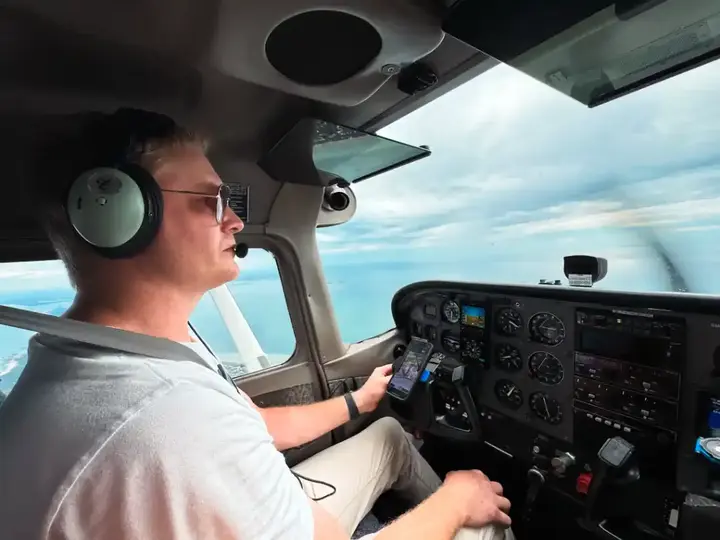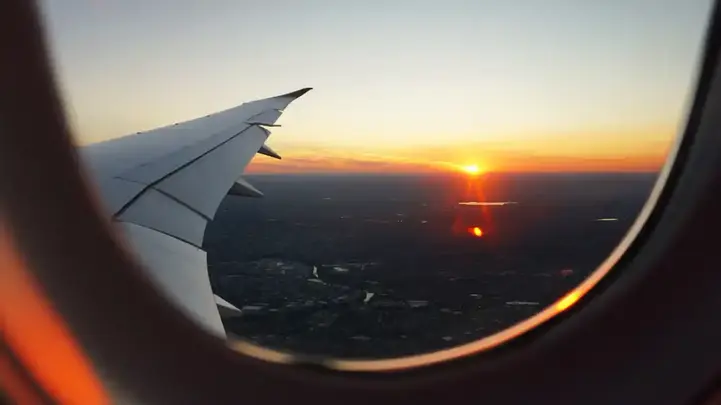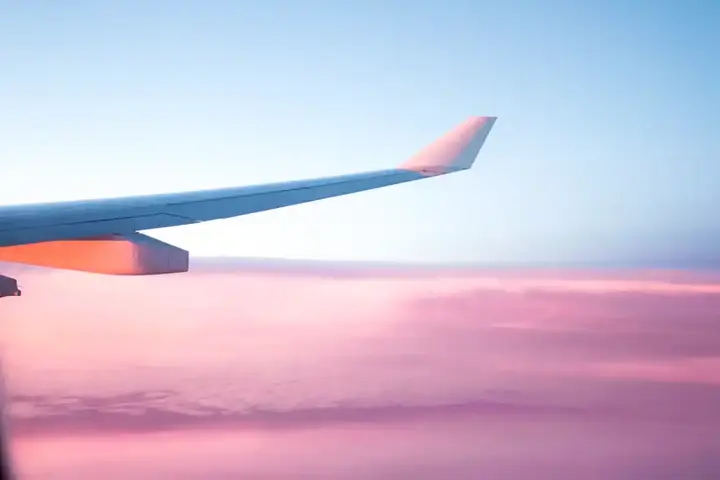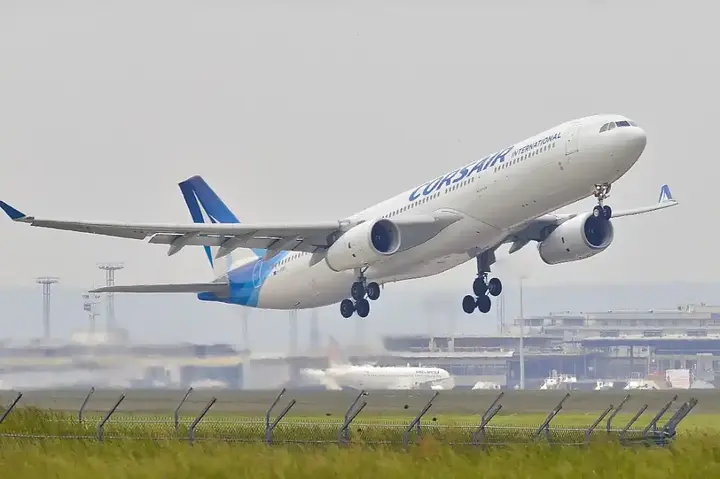How to overcome your fear of flying
The sky went from light blue to frightening green, quickly turned dark black, and lightning rays flashed out the window, lighting up the clouds outside. I looked around in the cabin, and I looked at strangers. Their faces were devoid of expressions due to fear. Then, as if snatched from the sky, the plane fell. There was a collective cry. Then the plane settled as if landing on a rock. I looked at a flight attendant. She looked scared, prompting my nervous system into a panic episode.
Then, another tremor occurred. It was harder this time. Some bags fell from the upper luggage compartments, and one fell on a woman's head. I remember thinking to myself: "I thought this only happens in movies." There was a man, and he was speeding back from the bathroom, so he drove forward, and his face fell into the aisle. The woman next to me started vomiting, and I handed her the bag out of my seat pocket.
Recommend
The plane's lights went out. For some time, there was no light except for emergency exit lights and lightning. The plane was going up and down and spinning from side to side. At one point, it looked as if the plane was going to spin fully. The hiccups were, at times, taking about five seconds, a long time for free fall.
To this day, I don't know what happened there, but I do know there were electrical problems. In my estimation, the plane was more than 30 years old. It was a short domestic flight in Vietnam. I'm sure every passenger on that flight thought they were bound to their own death.
Instead, after about 40 minutes of severe turbulence, the sea of darkness faded to gray, and the pilot landed at the nearest airport he could find. When we got out, the pilot's doors remained locked, and no one spoke.
A few hours later, we boarded another plane. Most of us were visibly shaky. The second flight was quiet and smooth, except for a deafening silence. It was in 2009, and for 12 years, I traveled the world, a phobic warrior and ignoring trauma.
Then in 2021, three months before the trip to Greece, I can no longer do it. Every second in the air felt like a clock on earth. I couldn't stand the thought of a 12-hour flight.
I was ready to cancel the trip. I tried a few healers. I thought CBT would work, but I was not lucky. Then I came across the SOAR program for fear of flying. It was developed by former Air Force pilot, licensed therapist and retired commercial pilot Tom Boone. That changed everything. Here's what I learned from Tom and others.
Request a pilot interview

If you can only do one thing to alleviate flying anxiety, so be this: meet the pilot. Boone emphasizes this point several times throughout his program.
I would never take another flight without trying to meet the captain. This instantly gives you a sense of pilot competence and confidence. Knowing that the captain is in control, you will not feel lonely during the journey. When there are turbulence or strange sounds, you can visualize the captain in the cockpit, confidently running his job, as he has gone through all this before.
When you meet the pilot, you limit the power of imagination. 99.9% of the time, pilots are nice and professional. They exude calm. Meeting the pilot gives your mind a picture of this veteran professional piloting the plane to your destination.
You'll need a letter from your doctor or therapist to do this, and the letter can look like this:
"Dear Passenger Service Agent,
This letter presents [name], who works with me to overcome his fear of flying.
According to Tom Boone, a leading expert in the field of aviation phobia, meeting an airplane pilot is the most important thing of all when dealing with anxiety in flight.
To achieve this, please board the aircraft before other passengers. Otherwise, please allow [name] to be the first group to board.
I am [qualified], and this one procedure has helped my patients overcome the difficulty of flying."
You can also formulate a second speech, in the same way, for the pilot. The introductory letter should be sufficient, and be sure to print it on the pilot's formal paper.
There's nothing more effective than meeting a pilot, which controls stress hormones and reminds the brain that the professional — someone you know now — controls the plane.
Learn about the facts of flight and aircraft functions

Emotions are triggered by intuitive logic and images on the right side of the brain. When we look out of the window of an airplane, the right brain creates cinematic images in the mind, and then an entire film is played before the left brain can create some semblance of order.
We imagine the plane falling to the ground. And while logic comes out of the plane window when we encounter turbulence, here are some facts to calm your mind:
Without power, commercial aircraft can become gliders up to 90 miles.
Flying is the safest way to travel by far (the chance of dying in a plane crash is about 1 in 11 million)
Air travel remains safer over time, as confirmed by the 2023 IATA report (with every major incident, changes are made - unlike car travel)
Most commercial aircraft have two engines, ensuring that if one fails, one of the engines will remain operable
There are backup systems and emergency systems for almost everything
Airplane wings designed to bend in any direction (Boeing 787 wings can bend 25 feet)
There are nearly 100,000 successful commercial flights a day, and the disruptions are rarely serious – there have been two deaths linked to the disruptions since 2009, the most recent of which was a heart attack. Before that, a passenger on a United Airlines flight was killed in 1997. That means three deaths in 25 years.
Meanwhile, car accidents and deaths from car accidents are at all-time highs. However, the dangers of driving rarely worry anxious travelers who feel more control behind the wheel. Despite this perception, traveling by car is more risky. U.S. highways experience more than five million car accidents annually, resulting in the deaths of about 43,000 people.
Use the calming power of a good friend

Recent research by the Salk Institute and the Massachusetts Institute of Technology reveals that calling a supportive friend from memory can help reduce stress. This method targets the amygdala, which releases stress hormones based on past experiences. Trauma can cause harmless situations to be classified as real threats.
Human imagination works automatically.

With mental exercises, you can reframe these situations by associating them with positive memories. This technique helps reduce anxiety in scenarios such as flying, based on advanced neuropsychological research.
Here's a simplified example:
Remember a time when you felt loved or appreciated by a close friend.
Place an image of an airplane inside the visual image of your memory
Restart the memory several times, noting the image, which can go from taxi to takeoff, fly and land.
This exercise connects the memories that stimulate oxytocin to the experience of flying, and replaces feelings of panic with feelings of joy.
Don't make things worse

Caffeine is strictly forbidden; it puts the central nervous system on high alert. It also increases the circulation of cortisol and adrenaline in the body. Even if your flight is at 6 a.m., try to resist the craving for caffeine.
Finally, don't let your nerves control your physical reactions. When we experience turbulence, we tend to push ourselves up from the seat, making us feel like the plane is out of control. Instead, take your arms off your armrests and focus on your body weight. You will feel more stable as a result.
Plan your trip activity

I have a travel expert girlfriend who has over 500k followers on social media. Like me, she has dealt with avian phobia all her life. Before each flight, you spend a few hours watching planes take off and land at Los Angeles International Airport. This makes flying less intimidating for her.
My friend was planning all her activities during the trip, which included feel-good movies and work assignments. She advises against watching flight trackers, as they make the mind obsessed with the amount of time left before landing.
Breathing exercises and physical exercises

Breathing exercises and physical exercises can help regulate the nervous system while flying. Examine your entire body and observe every sensation. Start with your hands, and notice the sensations. Put 100% of your focus on your hands. Note the slight tinnitus in your hands. Move your focus to your forearms, upper arms, shoulders, lower back, middle of your back, lower back, legs, pelvic floor and neck. Then observe the back of your head, top of your head, eyes, nose and lips. Finally, move on to your breathing.
Get on the plane and go.

Exposure is the only way to overcome phobias. We can do countless hours of preparation, but if we don't get on that plane and go, we'll still be paralyzed by fear.
Start slowly. Take a short regional trip to overcome the initial obstacle. Implement the right strategies to transform your flight experience from fear and panic to calm and control.
It's time to overcome your fear of flying.
![]()
Princess Tower... The second tallest skyscraper in Dubai
Princess Tower in Dubai Marina stands out with its luxurious design, 101 floors, and stunning views. Once the tallest residential building in the world, it offers elegant apartments, top-notch amenities, and a prime location near shops and transport, making it a dream home and a solid investment. more- ADVERTISEMENT
![]()
Moon Magic: How the Lunar Influence Shapes Earth's Tides
The moon's magical pull creates amazing tides that shape our coasts and marine life. From fishing to clean energy, humans have long benefited from this natural rhythm. The moon's gravity isn't the only driver—factors like geography, wind, and the sun also play a big part in this fascinating phenomenon. more- ADVERTISEMENT
![]()
Breaking the code of learning: does repetition really help?
Rote memorization—repeating facts to remember them—can help with basics like math tables or alphabets, especially in kids. But it’s often boring, lacks understanding, and doesn’t help apply knowledge in real life. While it boosts memory short-term, deeper learning methods work better for long-term success. more- ADVERTISEMENT
![]()
The Star Marvel: Discovering the Extraordinary in the Milky Way
The star marvel of the Milky Way dazzles with its vivid colors, sparkling structures, and deep mysteries. It's a celestial masterpiece that has inspired scientists and artists alike, blending beauty, culture, and cosmic curiosity into one extraordinary galaxy. more- ADVERTISEMENT
![]()
Medieval Viking banquets
Medieval Viking banquets more- ADVERTISEMENT
![]()
Belgrade, Serbia: Europe's new food capital?
Belgrade is now a buzzing foodie hotspot where creative chefs like Vanya Pushkar and Filip Seric reinvent traditional Serbian dishes with fresh flair. From smoked duck with herbs to grilled belly with currant sauce, the city's modern cuisine celebrates rich local flavors in vibrant, stylish settings. more- ADVERTISEMENT
![]()
75% of the global diet is produced by just 12 plants and 5 different animals
Our diets rely on just a few crops, making them fragile and less nutritious. Embracing lesser-known, diverse foods like millet and winged beans can boost health, support farmers, and protect against climate and crop threats. more- ADVERTISEMENT
![]()
Will the earth keep heating up?
The summer of 2023 brought record heat, fierce wildfires, and deadly monsoons—clear signs of worsening climate change. Scientists warn we’re edging close to the 1.5°C global warming limit, urging urgent action. Real change means cutting emissions now and rethinking our everyday choices—are we ready to act? more- ADVERTISEMENT
![]()
The world's oceans: species, environments, life and the magic of colors
The oceans, covering over 70% of Earth, are changing color due to climate change and human impact. From deep blue in the Pacific to green or milky turquoise in coastal or Arctic waters, these shifts reveal changes in marine life and health, making ocean conservation more vital than ever. more- ADVERTISEMENT
![]()
NASA rover discovery points to ancient microbial life on Mars
NASA's Perseverance rover is uncovering exciting clues that Mars may have once supported microbial life, especially with organic molecules found in rocks like "Cheyava Falls." Landing in the ancient Jezero Crater lakebed, its mission opens doors to deeper space exploration and the search for life beyond Earth. more- ADVERTISEMENT





















